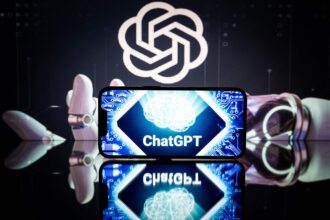Last month I spoke to the Diversity, Equity and Inclusion (DEI) committee of NICSA. During my talk I asked the audience members if they had tried ChatGPT or other AI applications. Only about 1 in 10 of the attendees raised their hands. Surprised by this low number, I veered off my prepared remarks to dig a bit deeper. “Why aren’t people using AI?” I asked. I was stunned when several of them said their companies wouldn’t let them.
Companies prohibiting their employees from experimenting with ChatGPT and other AI applications are making a huge mistake. If we don’t embrace AI, we will simply leave it in the hands of nefarious people. That would clearly hurt the rest of us. AI can give workers the equivalent of superpowers that vastly improve their performance in daily tasks and responsibilities.
I know this because I was an early convert. In fact, I used ChatGPT to help write the speech I gave at that conference. The key word there is help, or maybe augment, or curate, or ideate. Make no mistake: They were my remarks, but I gained a huge advantage by asking ChatGPT to help.
When I revealed that fact from behind the podium, the audience was surprised. Some were visibly uncomfortable. I understood their reaction. For those who have never tried these new tools, using AI to write something as personal and important as a speech can seem like cheating. That fact, along with fears about the risks of an unfamiliar technology, probably explains why some companies have banned the use of AI for now.
Empowering Employees
AI is not cheating—it’s empowering. ChatGPT and other forms of AI make us all more productive by augmenting, enlightening or curating tasks that once took hours and iterations but can now be finalized in seconds. I told the audience that, in the past, I would have spent hours doing background research to write my speech. Those hours were often during the workweek, when I would have had to set aside other important tasks. Or, more likely, I would have done the research over the weekend at home, missing out on time with my family.
Instead of that, I logged on to ChatGPT. First, I asked the application for information about the national group. In seconds I had the background I needed to understand the association and its membership, activities and mission. Those results were impressive, but not too far removed from what I could have assembled myself in an hour or so with a few Google
GOOG
These ideas weren’t perfect. Some were off base entirely. They all required additional research to confirm the facts and flesh out the arguments. But they provided a starting point for my thinking that, combined with the earlier basic background, cut hours off my preparation, freeing up time that I could devote to other important activities. The third iteration was the coolest. I asked ChatGPT to compare and contrast our company’s approach to and philosophy around diversity, equity and inclusion with that of the NICSA Diversity Project North America. Wow—in less than a second I had a quick macro assessment of how our unwavering commitment to diversity was fully aligned with NICSA’s program. Being totally honest here, the contribution from ChatGPT offered me three dimensions that would have taken a lot of time and critical thinking to bring together. The AI results included several ideas that I hadn’t considered but that ultimately resonated with the audience.
Now, rest assured the remarks were mine, and I explained how I took generative AI’s insights and applied my real-life experience, role, responsibilities and advice. These AI capabilities can be applied to any work or personal task. I am also getting better at distinguishing pure AI responses from human-augmented AI. I have had candidates write to me and I can clearly see it is AI writing, not the person. Instead they should be using AI but then making it human when they finalize the written communications. Not only can the AI application provide important information about companies, functions and job roles, but it can also generate insights into hiring managers and give candidates ideas about how to make a personal connection.
Applications Across Businesses and Workflows
Instead of banning AI, companies should establish clear ground rules on when and how the technology can be used. Think of the potential uses for this technology in sales, client service, product development and other areas of business. But none of those enhancements will come to pass if companies stop employees from tinkering with AI.
For example, employees might be allowed to use AI to start crafting client communications or sales presentations, but the final product must be vetted and written by a human. Companies should view AI as a personal assistant to every employee. Although the assistant is hyperintelligent and massively productive, it is also inexperienced and, for now, error prone. As a result, the assistant must always function in a subordinate role, with all products reviewed and finalized by the human employee.
Different companies can take different approaches. What companies cannot afford to do is eliminate AI altogether. As I explained to the audience in my speech, regardless of how we feel personally about ChatGPT and other new AI applications, this technology is already permeating society. Companies that ignore it will cede these productivity superpowers to their competitors.
At the end of my speech, I asked everyone in the audience to raise their hands again if they were willing to promise to try ChatGPT. Most of them did. Hopefully, you will too.
Read the full article here










